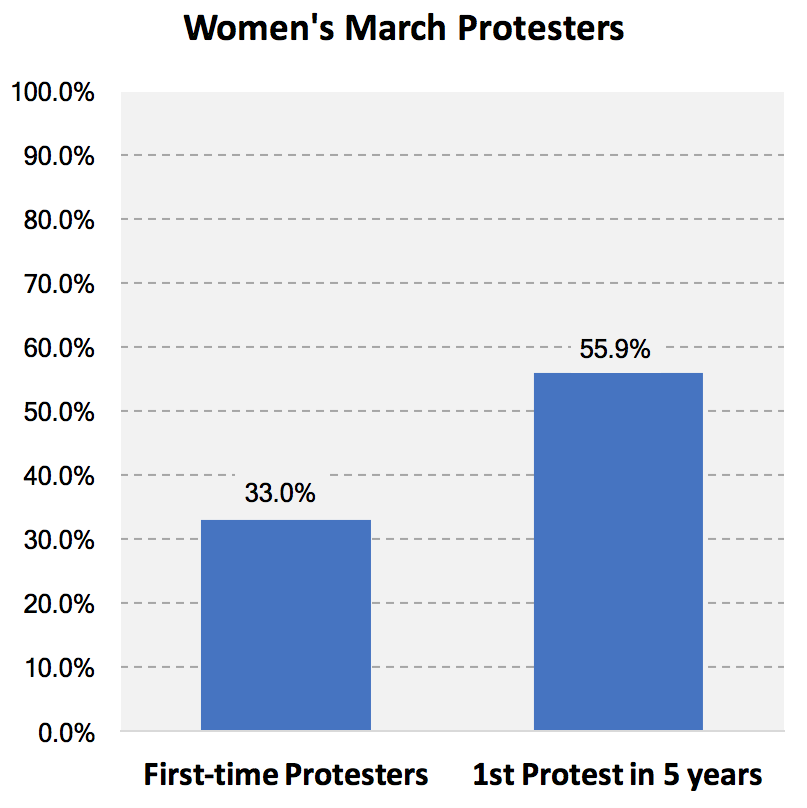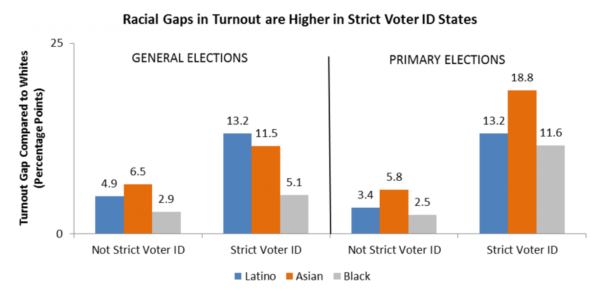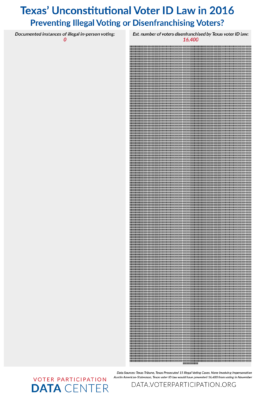NPWF: Not Enough Family Friendly Policies
The National Partnership for Women and Families has released a fact sheet on the state of family-friendly policies that affect the economic stability and well-being of women and families — and the news isn’t good. The wage gap, discrimination on the basis of pregnancy, a lack of paid family and medical leave and paid sick days, unpredictable scheduling and hours, and stagnant wages continue to keep women, particularly mothers, from realizing their economic potential.
The fact sheet concludes with several legislative proposals to improve the economic stability of women and families, writing:
Women, their families and our nation urgently need policies to promote fair pay and create modern workplace standards, bolstering their financial security now and promoting economic opportunities in the future.
Read NPWF’s fact sheet, “Not Enough Family Friendly Policies: High Stakes for Women and Families.”
IWPR: 5 Facts about Women and the Economy
For International Women’s Day and the “A Day Without a Woman” strikes occurring across America, the Institute for Women’s Policy Research has compiled together 5 important facts to know about women and the economy:
1. Hispanic women will wait 232 years for equal pay, if current trends continue.
2. Equal pay would cut poverty by more than half for working women and grow the U.S. economy.
3. Job Segregation keeps 1 in 4 working women in traditional care, serving, and cleaning roles with lowest pay.
4. Women account for only 1 in 3 workers in good, growing, middle-skill occupations.
5. A national paid leave policy could help young working mothers, a group least likely to have access to leave.
Read more from IWPR about these economic barriers women continue to face in our economy.
New Poll on Turnout Voters and Swing Voters - in 2016 and Beyond
A new PrioritiesUSA poll from Global Strategy Group and Garin Hart Yang provides important insight to two voting groups that were critical in the 2016 election: “swing voters” who supported Obama in 2012, and Trump in 2016, and “turnout voters” who voted in 2012, but stayed home in 2016. The research included a survey of 801 Obama/Trump voters, and focus groups in key swing states.
Key insights from the poll:
- In particular, non-college women present a key opportunity. Non-college women make up the largest proportion of Obama-Trump voters with mixed feelings about voting for Trump and thus present a particularly promising opportunity for persuasion efforts.
- Turnout voters – those who voted in 2012, but not 2016 – are disillusioned about politics, but extremely unhappy about the idea of a Donald Trump presidency. They were surprised about the 2016 outcome and are distraught about the prospect of four years under Trump.
- Turnout voters are also concerned about how Trump may unravel core protections that they value. Drop-off voters are concerned Trump will undermine women’s rights, do serious damage to the environment, and promote a divisive agenda.
Washington Post: Do voter identification laws suppress minority voting? Yes. We did the research.
New research published in the Washington Post confirms one of the worst-kept secrets in politics: Voter ID laws suppress minority voting.
“When we compare overall turnout in states with strict ID laws to turnout in states without these laws, we find no significant difference. That pattern matches with most existing studies. But when we dig deeper and look specifically at racial and ethnic minority turnout, we see a significant drop in minority participation when and where these laws are implemented.
Hispanics are affected the most: Turnout is 7.1 percentage points lower in general elections and 5.3 points lower in primaries in strict ID states than it is in other states. Strict ID laws mean lower African American, Asian American and multiracial American turnout as well. White turnout is largely unaffected.
These laws have a disproportionate effect on minorities, which is exactly what you would expect given that members of racial and ethnic minorities are less apt to have valid photo ID.”
Texas voter ID law would have prevented 16,400 from voting in November
“At least 16,400 Texans who voted in the November election wouldn’t have been able to cast ballots if the state’s voter identification law had been in full effect, state voting records show.” This report from the Austin American-Statesman is a chilling reminder of what experts agree is the true intent of such laws: disenfranchising voters.
“Travis County Clerk Dana DeBeauvoir said the volume of the declarations validates the concerns that the law’s opponents raised. “The voter ID law was going to take away the legal right to vote of 2,300 people” in the county, she said. The voters who signed those declarations, she said, “tended to be poor, tend to be elderly — maybe they weren’t born in a hospital or had other extenuating circumstances.”
Texas Attorney General Ken Paxton, whose office has defended the law, didn’t respond to a request for comment.”
However, former Texas Secretary of State Carlos Cascos, an Abbott appointee who stepped down after the November election, admits that the law would have prevented voters from casting their ballots: “Asked if that meant those voters would have been disenfranchised, Cascos said, “I would agree. That is a way to look at it.”
“And, he observed, the number of potentially disenfranchised voters “might not be important for a presidential race or a statewide race, but it very well might matter for local votes, where there can be really small margins.”
“At the end of the day, we want to make sure every qualified Texan who can vote should be allowed to vote,” he said, “(16,000) people wanted to vote and got to vote, so that’s great.”
Full story in the Austin American-Statesman.
Data on the Women's March: This is what Democracy Looks Like!
The numbers are in: “The Women’s March of 2017 was the largest protest in recent history, bringing together over 500,000 people in DC- the location of the flagship march, and over 2.9 million people nationwide.”
Their findings “suggest that the Women’s March has potentially lit the political fires of a new generation of activists and reactivated the political activism of others. Indeed, a third of the participants reported that the Women’s March was their first time participating in a protest ever. For over half of the participants (55.9%), the March was their first protest in 5 years (including those who had never participated before).”


The 2017 Agenda: The Affordable Care Act and the New American Majority
As part of our overall goal to collect and highlight data that reveals the economic and political conditions of unmarried women and the New American Majority (which also includes people of color and millennials), we’ve analyzed how repealing the Affordable Care Act would affect these crucial populations, and collected polling data on what Americans think about the ACA. We’ve also done some preliminary analysis of some of the Republican “replacement” plans, and put together a list of policy considerations for unmarried women in particular in any discussion of repealing and replacing the ACA.
Here are some of the things we found:
- The Affordable Care Act is helping Americans. It has helped cut the uninsured rate for adults ages 18-64 by 43%, a change that has particularly helped unmarried women. In 2013, 10.1 unmarried women 18-64 were uninsured; by 2015, that number had fallen to 6.8 million.
- According to a November 2016 poll from Kaiser Health Tracking, most of the provisions of the Affordable Care Act are extremely popular—including allowing young adults to remain on their parents’ plan until age 26 (85% in favor), eliminating many out-of-pocket expenses for preventative services (83%), providing subsidies to low- and moderate-income Americans to help them get insurance coverage (80%), and prohibiting insurance companies from denying coverage due to preexisting conditions (69%). Additionally, a January 2017 poll from Quinnipiac (conducted after this report was completed) indicates that only 18% of Americans want to repeal the ACA.
- According to analysts, the “replacement” plans being proposed would cost more money, cover fewer Americans, or both — and, of course, repealing the ACA without replacing it would take away health coverage from tens of millions of Americans, with a particularly heavy impact on the New American Majority.
Downloads
Job Segregation Keeps 1 in 4 Working Women in Traditional Care, Serving, and Cleaning Roles with Lowest Pay
A new study by the Institute for Women’s Policy Research (IWPR) and Oxfam America finds that more than one in four employed women in the United States are concentrated in low-wage “women’s work”—such as teaching young children, cleaning, serving, and caring for elders—jobs that are done primarily by women, pay less than $15 per hour, and provide few benefits.
Workers in these female-dominated jobs, who are disproportionately women of color, earn less than men working in jobs with similar requirements for education, skills, stamina, and hours. For instance, maids and housekeepers, who earn $9.94 per hour, are 90 percent female, while janitors, who are mostly men, earn 22 percent more, at $12.13 per hour.
WVWVAF / Democracy Corps Election Night Survey: Why?
Our sister organization, Women’s Voices Women Vote Action Fund, and Democracy Corps surveyed 1,300 voters between Nov. 7 and Nov. 9, 2016, including an oversample of 200 Rising American Electorate voters and 200 battleground state voters (AZ, FL, OH, IA, NC, NV, NH, PA, VA, WI). Select highlights are below; you can read the full survey here.
Voters Dissatisfied With Economy’s Progress and Fairness
Lots of Rising American Electorate, including unmarried women, thought Trump expressed legitimate frustration
538: Men are treating 2016 as a normal election. Women aren't.
Harry Enten at FiveThirtyEight sums up the current polling:
We could be looking at the largest gender gap in a presidential election since at least 1952…The last time women favored either party’s nominee by more than 20 percentage points was in 1972, when Republican Richard Nixon crushed Democrat George McGovern among both sexes. The only Democrat ever to win women by more than 20 points was Lyndon Johnson in 1964.”





